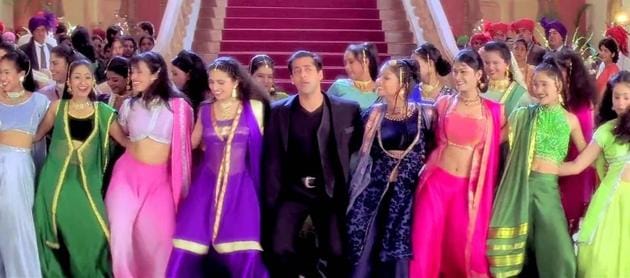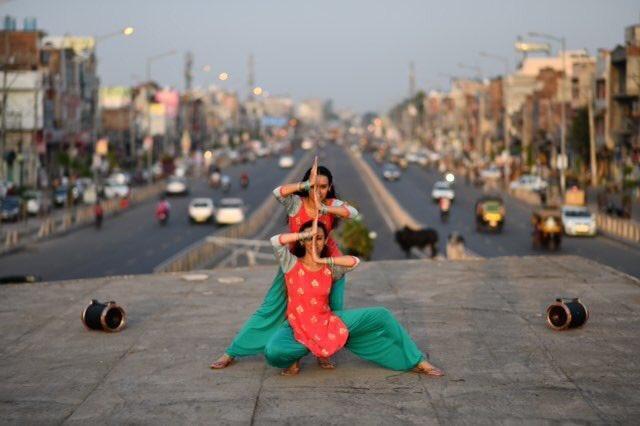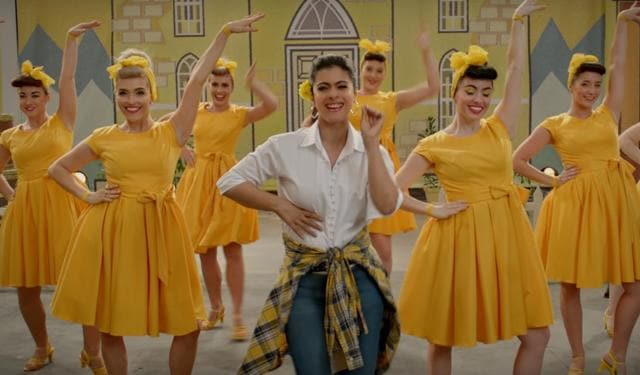It’s a slow fadeout for Bollywood’s background dancers
As films change, with fewer songs and carefully crafted dance sequences, the professional dancer is being replaced by eager youngsters out for a lark and foreigners wanting to cross this off their bucket lists.
When Kuch Kuch Hota Hai hit screens in 1998, with its feel-good story and star cast, it had eight songs in its three-hour runtime. Six of those featured hundreds of background dancers each.

This year, hits like Andhadhun and Raazi had stellar soundtracks, but required no background dancers. Badhaai Ho had just a few, in a single song sequence.
“Gone are the massive sets and over-the-top song sequences with rows and rows of people,” says film critic Anupama Chopra. “Take the filmmaker Shankar. He is a master of those giant song sequences — I’ll never forget the song ‘Kilimanjaro’ from Enthiran (Robot) in 2010. This year, his 2.0 has only three songs, one each for opening and ending credits and one other song, ‘Mechanical sundariye’ [Hindi version title]. Only that third song has any background dancers.”
Critically acclaimed films like Manmarziyaan and Mukkabaaz have taken the experimentation a step further, with song sequences featuring just two teenage girls (‘DhayaanChand’); or a single guy dancing to rap by Divine and Nucleya (‘Paintra’).
“The trend has changed,” says Chopra. “Now, people are telling stories that they are trying to root in some sort of reality.”

‘I think it was Farah Khan who first used actual college students as background dancers, in 1995, when she shot ‘Ruk ja o dil deewane’ for Dilwale Dulhania Le Jayenge,’ says film critic Anupama Chopra.
Which leaves little room for professional background dancers like Surendra ‘Suri’ Pevekar, 38. He spent years struggling, building networks, working at a private bank for part of the day and taking Bharatanatyam classes in the evenings, with the ultimate aim of dancing in Bollywood backgrounds full-time.
Eventually, a decade ago, he made it to the big leagues and began working with choreographers like Terence Lewis, Remo D’Souza, Saroj Khan and Ganesh Acharya. He was glimpsed behind Khans, Kapoors, Kumars and Roshans.
He noticed the crowds around him changing. There were more foreigners, more college students, more ‘day trippers’ looking to check this experience off their bucket lists. They were willing to work longer hours, for much less pay. Dance coordinators started to reach out to their agents directly, rather than artistes associations and large troupes.
Pevekar started getting fewer and fewer calls. He’s now down to one gig a month, or every two months. Of the song and dance routines that remain, many are carefully crafted scenes with just the stars, or a few friends in the background.
“Previously, we saw 40- to 45-year-old dancers featuring in college scenes. Now, directors are very particular about how each and every person in the film looks,” says Ravi Kanwar, general secretary of the Cine Dancers Association (CDA). “They never auditioned for dancers before, but they are doing auditions now.”

COUNTING DOWN
“There is a sense that the golden days of the Bollywood background dancer are gone – those days when the Govindas and Akshay Kumars were in their prime. Varun Dhawan and Shahid Kapoor make shake a leg, but it’s not the focus of the film any more,” says choreographer-cum-director Remo D’Souza. “If you are a background dancer in Bollywood, chances are you are either completely broke or living in a plush 3BHK in Juhu. There is no in-between.”
‘Today’s films are more realistic. Actors rarely lip sync. Songs are often played in the background. Only superstars’ films still have stage performances,’ says filmmaker Subhash Ghai.
As opportunities dwindle, many, like Pevekar, have turned dance instructors. Most of their students are children or hobbyists.
“One of my colleagues, who worked with us for about a decade, became a cab driver,” says Sunny Yadav, 30, a dancer-turned-instructor. “I got the shock of my life when I saw him in his taxi. He said that he had to survive, and the rose-tinted glasses had fallen off.”
As demand dwindles, what’s left, casting coordinators say, is usually a very specific requirement — young, fair, pretty, light-eyed, light-haired.
“Coordinators say things like, producers have asked for dancers, not monkeys. We want Shah Rukh Khan, not [comic character actor] Rajpal Yadav,” says Sunny.
There’s a preference for female dancers over male dancers, another change from before. “Male dancers are finding it difficult to survive. It was very different in the ’90s,” says an A-list choreographer, on condition of anonymity.
THE LOOK OF THE THING
The industry has changed a lot, in other ways too, says Raj Surani, a former background dancer who set up Octopus Entertainment and now connects backup dancers with filmmakers. “A turning point was when the Competition Commission of India overturned the monopoly of the 20 cine employees’ associations, including the CDA, which had controlled a lot of the hiring of talent.”
‘Previously, we saw 40- to 45-year-olds featuring in college scenes. Now, directors are particular about how each person in the film looks. They never auditioned for dancers before, but they are doing auditions now,’ says Ravi Kanwar of the Cine Dancers Association.
Now you don’t have to be a card-holding member of an association. “Directors’ requirements are, young, good-looking, fit,” Surani adds. If you check those boxes as a dancer, you can earn an average of ₹70,000 a month.
“I’m trained in Bharatanatyam, Kathak and Sattriya. After struggling for a few years to earn my way and make contacts, I’m now a background dancer and work with a coordinator,” says a 29-year-old from Assam, on condition of anonymity. “I work for 10 to 12 days in a month and I earn at least ₹50,000 per month on an average or more.”
One reason he earns so much, ironically, is that while non-CDA dancers may earn less than members ( ₹2500 to ₹3,000 per day, on average), they tend to get more work because they come with fewer strings attached.
“I have been in this industry for 20 years. When we started, despite the enormous struggle of getting work, people didn’t discriminate on the basis of your skin colour. Talent mattered,” says Ahmed (name changed), 43. “Now it’s all about pretty faces, new faces. I can set the stage on fire, but that doesn’t help me get work.”

IMPORT-EXPORT
Laura Philpott is 20. She’s been in India just under six months, and so far she’s danced with Aishwarya Rai Bachchan in Fanney Khan, Will Smith for Student of the Year 2 and Katrina Kaif in Zero.
She came here from New Zealand on a six-month work visa (she’ll soon be leaving), with nine other dancers from the UK, all brought over together by the same British agent.
“When I was put in the scene with Aishwarya Rai Bachchan, I had no idea who she was. I was more excited because the song was choreographer by Frank Gatson Jr, who worked with Michael Jackson, Beyoncé, Jennifer Lopez and Rihanna, to name a few,” she says.
Philpott’s jig behind Will Smith, incidentally, choreographed by Remo D’Souza, happened because the Hollywood star was in Mumbai and he wanted to tick dancing in a Bollywood song off his bucket list.
Surani says his company has about 12 foreign dancers registered with them at all times. They earn more too — ₹10,000 to 15,000 per day.
“I will be dancing professionally when I go home, but I would definitely like to come back to Bollywood,” says Philpott.

Get more updates from Bollywood, Taylor Swift, Hollywood, Music and Web Series along with Latest Entertainment News at Hindustan Times.
Get more updates from Bollywood, Taylor Swift, Hollywood, Music and Web Series along with Latest Entertainment News at Hindustan Times.





